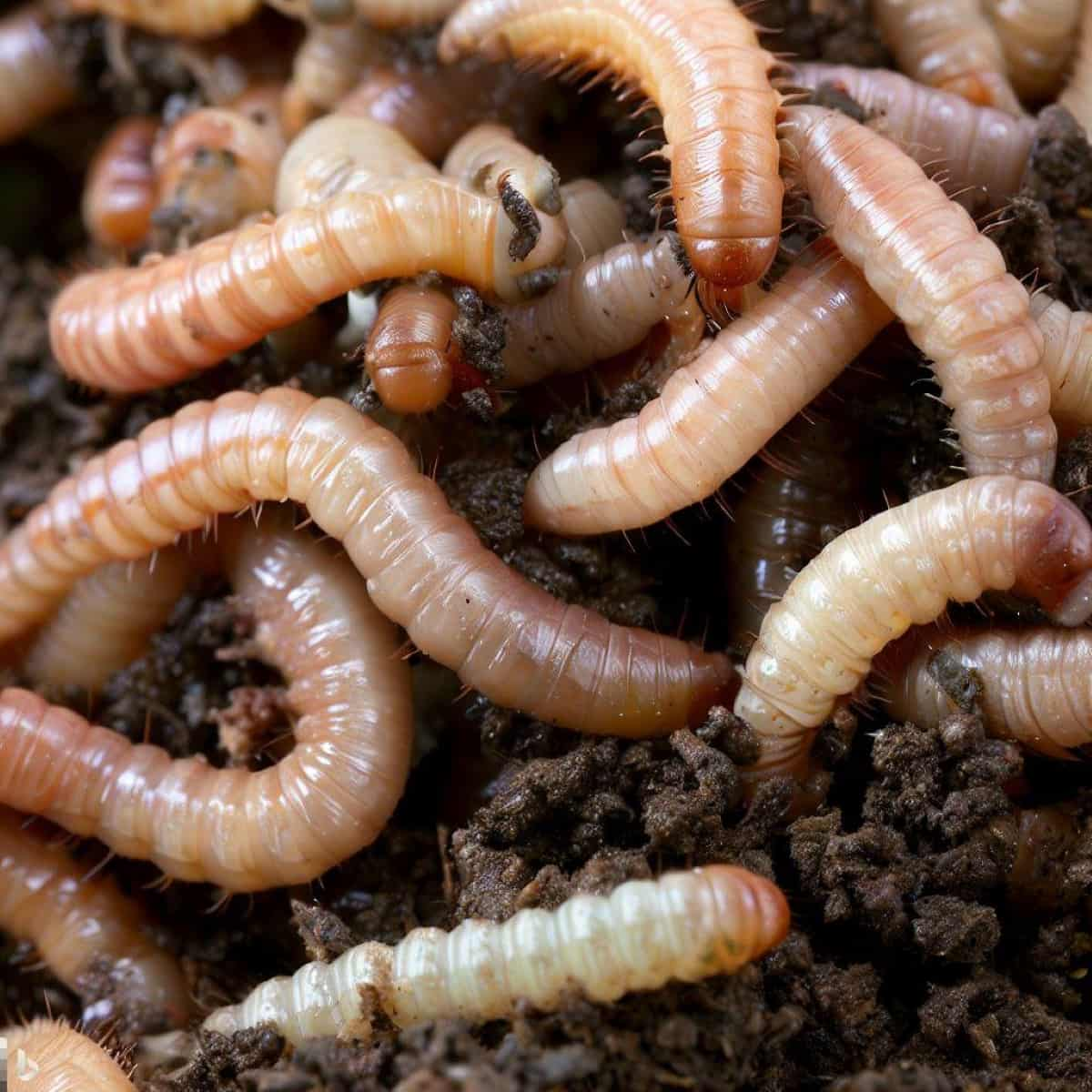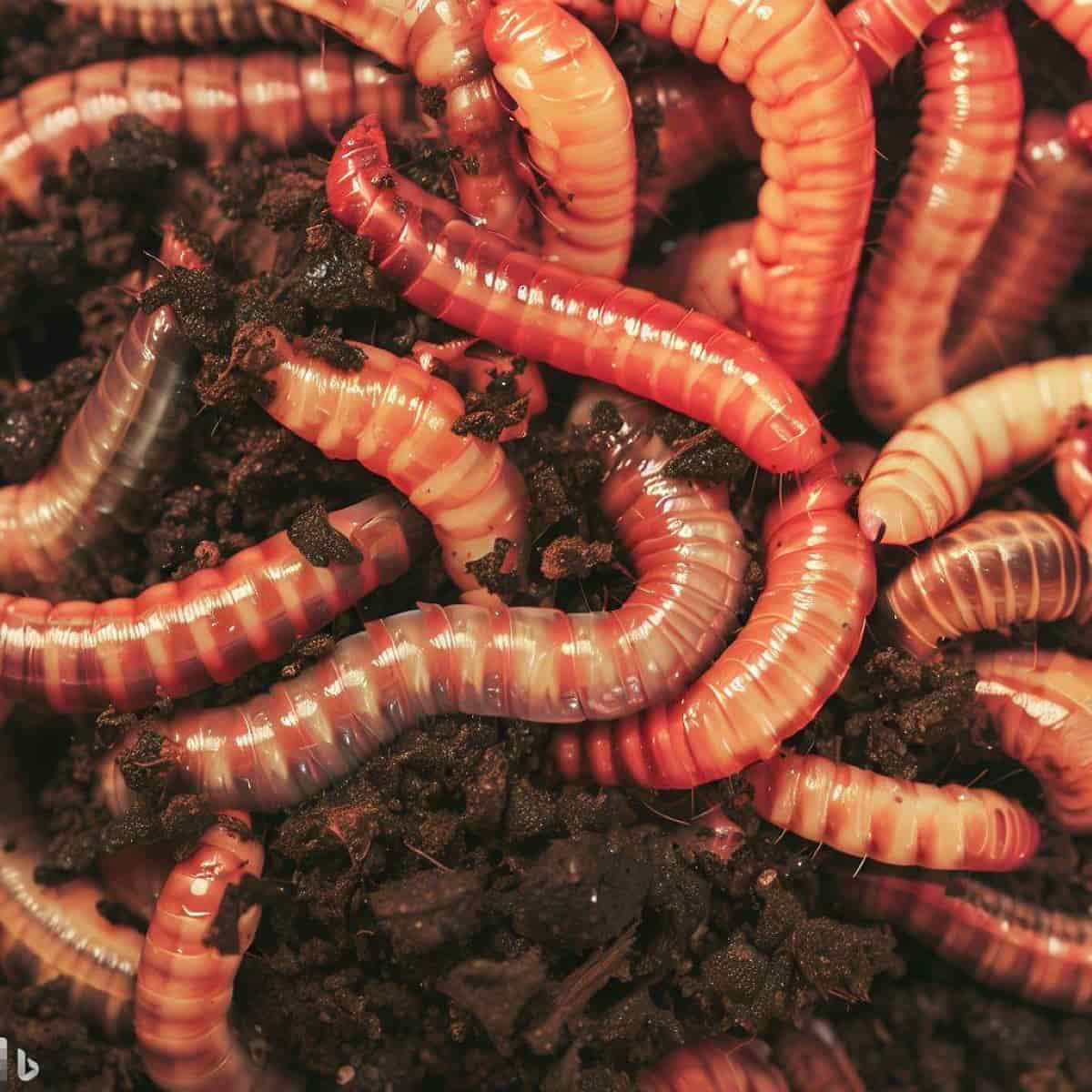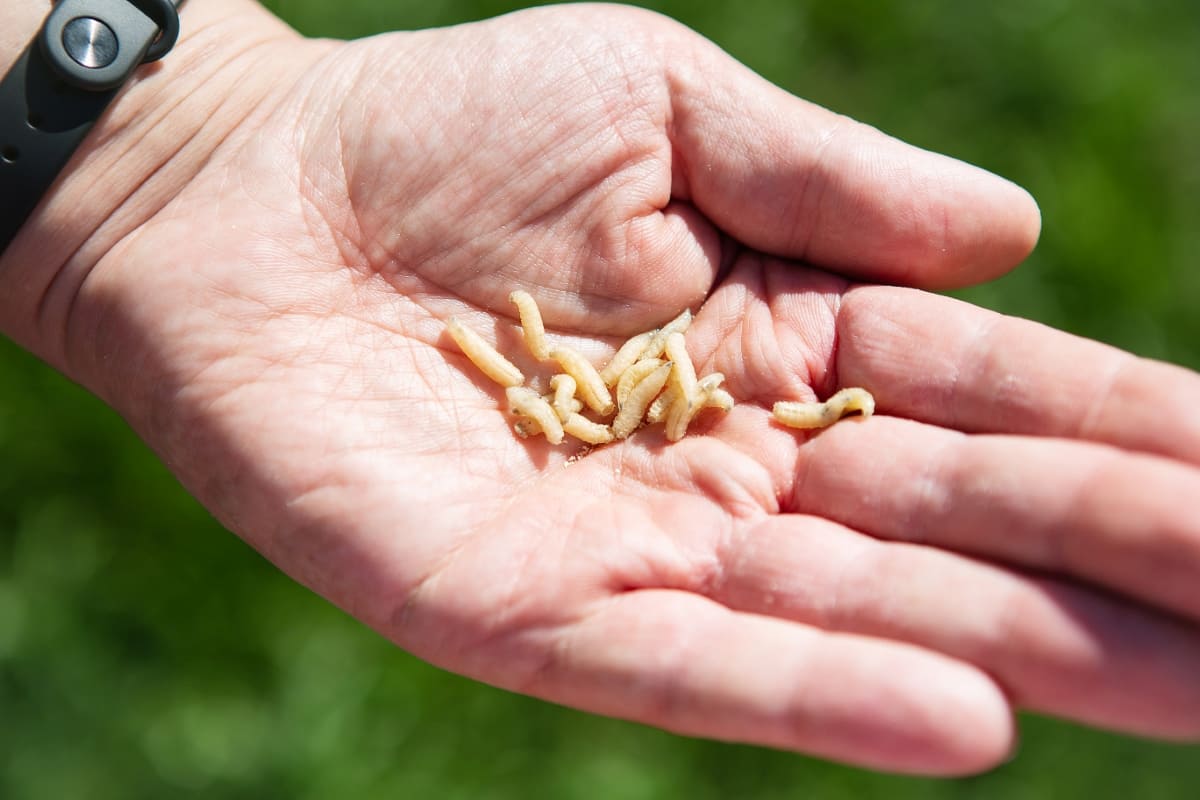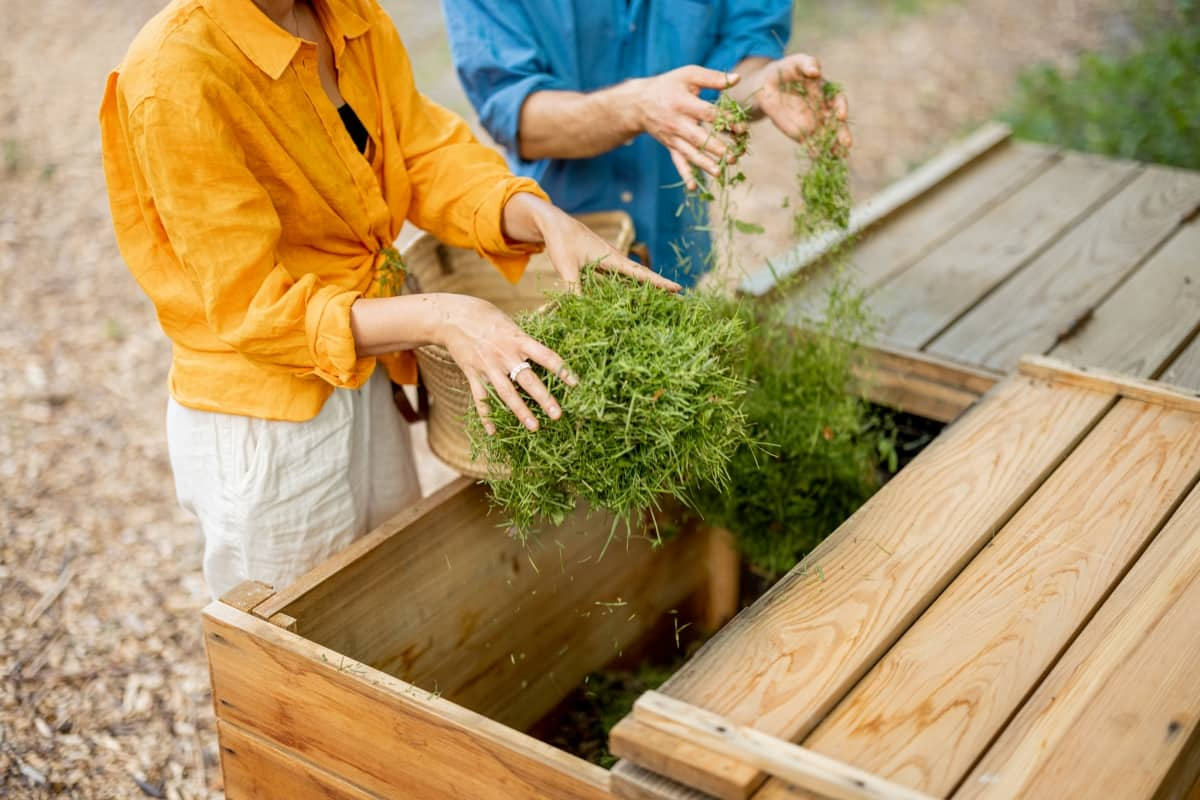Composting is an excellent way to reduce waste and create nutrient-rich soil for your garden. However, one common issue many compost bin owners face is the presence of maggots. These wriggling creatures can be quite unpleasant and may deter some people from composting. In this document, we will discuss various tips and natural prevention techniques to help you get rid of maggots in your compost bin.

How to Get Rid of Maggots in Compost Bin
Understanding the Life Cycle of Maggots in Compost
The life cycle of maggots in compost is a fascinating process. It begins with the adult flies laying their eggs on the decaying organic matter. These eggs hatch into tiny larvae known as maggots. The maggots feed on the decomposing material, breaking it down further. As they grow, they molt several times before entering the pupal stage.
During this stage, the maggots transform into pupae, which eventually develop into adult flies. The entire life cycle of maggots in compost can take anywhere from a few weeks to a few months, depending on environmental conditions such as temperature and moisture. Understanding this life cycle is essential for effective composting practices.
Identifying the Common Causes of Maggot Infestation in Compost Bins
- Excessive moisture: Maggots thrive in damp environments. If your compost bin is too wet, it becomes an ideal breeding ground for flies to lay their eggs.
- Unbalanced carbon-to-nitrogen ratio: An improper balance between carbon-rich (browns) and nitrogen-rich (greens) materials can lead to excessive decomposition, attracting flies and maggots.
- Inadequate aeration: Lack of proper airflow in the compost bin can create a stagnant environment, encouraging larvae growth.
Maggots in Compost Good or Bad? : Let Us Find Out
Contrary to popular belief, maggots in compost are not necessarily a cause for concern. While they may be unsightly, they are crucial in breaking down organic matter and accelerating the decomposition process. Maggots are often a sign that your compost is active and healthy. However, the following prevention techniques will be useful if you prefer a maggot-free compost bin.
In case you missed it: How to Identify and Treat Apple Maggot in Northwest: Prevention and Solution

Proper Composting Techniques to Prevent Maggot Infestation
- Monitor moisture regularly: Check the moisture content of your compost by squeezing a handful. It should feel moist but not dripping wet.
- Adjust moisture as needed: Add water using if your compost is too dry by using a watering can or soaker hose. Conversely, if it is too wet, add dry browns such as shredded paper or dry leaves to absorb excess moisture.
- Cover the compost during rain: If you expect heavy rainfall, cover your compost bin to prevent it from becoming overly saturated.
Maintaining Optimal Moisture Levels in Your Compost Bin to Deter Maggots
Maintaining optimal moisture levels in your compost bin is essential to deter maggots. Maggots thrive in moist environments, so keeping your compost bin adequately hydrated is crucial. Aim for a moisture level of around 50 to 60 percent, similar to a damp sponge. To achieve this, regularly monitor the moisture content of your compost pile by squeezing a handful of it.
If it feels too dry, add water to moisten it. Conversely, add dry materials like leaves or shredded paper to absorb excess moisture if it feels too wet. Maintaining the right moisture levels can discourage maggots from infesting your compost bin.
The Importance of Regularly Turning and Aerating Your Compost Pile
This practice helps to accelerate the decomposition process and ensure the production of high-quality compost. Turning the piles introduces oxygen to the inner layers, promoting the growth of beneficial aerobic bacteria. These bacteria break down organic matter more efficiently, preventing foul odors and promoting a healthy composting environment.
Additionally, turning the piles helps to distribute moisture evenly, preventing waterlogged or dry spots. Proper aeration and moisture levels promote the activity of decomposers, leading to faster decomposition and the creation of nutrient-rich compost. Regularly turning and aerating your compost piles is crucial to successful composting.
Using a Balanced Carbon-to-nitrogen Ratio to Discourage Maggots in Compost
Maggots, the larval stage of flies, thrive in decomposing organic matter rich in nitrogen. Maintaining a proper C: N ratio can create a less favorable environment for developing larvae. The ideal ratio for composting is generally considered 30 parts carbon(C) to 1 part nitrogen(N). Carbon-rich materials like dried leaves, straws, or wood chips can help achieve this balance.
In case you missed it: How to Identify and Control Root Maggots: Treatment, Natural and Organic Management

Mixing them with nitrogen-rich materials like kitchen scraps or grass clippings will create a compost pile that is less attractive to larvae. Properly managing your compost’s C: N ratio can help you avoid maggot infestations and create nutrient-rich compost for your garden.
Effective Covering Methods to Keep Maggots Out of Your Compost Bin
- Firstly, ensure your compost bin has a tightly fitting lid to prevent flies from accessing it.
- Additionally, using a layer of straw or shredded paper on top of the compost can create a barrier that discourages flies from laying their eggs.
- Another effective method is to cover the compost with a layer of soil, which makes it less attractive to flies.
- Another effective method is to periodically turn and mix the compost to prevent moisture buildup, which attracts flies.
- Lastly, avoid adding meat, dairy, or oily food scraps to your compost, which can attract flies and maggots.
Utilizing Natural Predators to Control Maggot Population in Compost
The maggot population can be naturally suppressed by introducing beneficial organisms into the composting environment, such as predatory beetles, nematodes, and mites. These predators feed on Maggots, preventing them from multiplying and causing damage to the compost. Creating a favorable habitat for these predators is important, including providing adequate moisture, temperature, and food sources. Regular compost monitoring is necessary to ensure the predator population remains stable and effective in controlling Maggots.
Maggots in Kitchen Compost Bin: How to Avoid Maggots in Compost?
- Firstly, ensure that your compost bin has a tight-fitting lid to prevent flies from accessing it.
- Additionally, avoid putting meat, dairy, or oily food scraps in the bin, as these can attract flies and maggots.
- Instead, stick to fruit and vegetable scraps, coffee grounds, and yard waste. It’s also important to regularly turn and aerate the compost to discourage maggot infestations.
- Lastly, if you notice maggots, remove them and add a layer of dry material like leaves or newspaper to reduce moisture and discourage their return.
Implementing Temperature Management Strategies for Maggot Prevention in Compost
Maggots thrive in warm, moist environments, so maintaining the right temperature is key. Firstly, monitor the compost temperature regularly using a thermometer. Keep the temperature between 120°F and 160°F to discourage maggot growth. To achieve this, turn the compost regularly to ensure proper aeration and heat distribution.
In case you missed it: From pH Levels to Composting: How to Prepare the Best Soil for Your Flower Garden

Adding dry materials like straw or wood chips can help absorb excess moisture and regulate temperature. Avoid adding large amounts of wet materials, which can create favorable conditions for maggots. These temperature management strategies can effectively prevent maggot infestation in your compost pile.
Conclusion
By following these tips and natural prevention techniques, you can effectively get rid of maggots in your compost bin and maintain a healthy composting process. Remember to maintain proper balance, turn the compost regularly, cover food scraps, maintain moisture levels, avoid certain materials, and use natural repellents. Happy composting!
- Feed Your Flock for Less: Top 10 Tips to Save on Chicken Feed
- Ultimate Guide to Ossabaw Island Hog: Breeding, Raising, Diet, and Care
- Hatching Answers: The Top 10 Reasons Your Chickens Aren’t Laying Eggs
- Eggs and Economics: Breaking Down the Cost of Raising Backyard Chickens
- Defend Your Greens: Proven Methods to Keep Iguanas Out of Your Garden
- Ultimate Guide to Cinnamon Queen Chicken: A Comprehensive Guide for Beginners
- Ultimate Guide to California Tan Chicken: Breeding, Raising, Diet, Egg-Production and Care
- Ultimate Guide to Marsh Daisy Chicken: Breeding, Raising, Diet, and Care
- 10 Types of Chicken Farming Businesses You Can Start for Profits